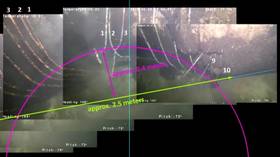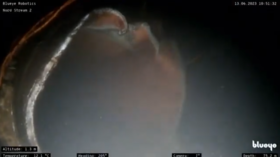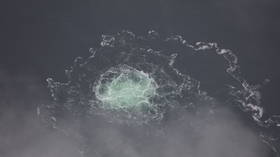New Nord Stream theory tabled by US journalists

Western investigators, experts, and the media overestimated the amount of explosives used to blow up the Nord Stream gas pipelines and misplaced the location of the blasts, US journalists Max Blumenthal and Wyatt Reed argued in an article published by The Grayzone website on Tuesday.
The pipelines, built to deliver Russian natural gas to Germany, were destroyed by underwater explosions in September 2022.
Undersea footage provided by Erik Andersson, a Swedish engineer who led an investigation at the blast sites, shows that most of the destruction observed on the pipelines was “not a result of the explosions themselves, but from the rapid release of extremely high pressure,” the journalists said, citing several specialists.
The first publicly available images of the Nord Stream lines following the September 2022 attack were captured by Blueye Robotics, a Norwegian firm which produces underwater drones. While the footage did appear to show a stretch of destroyed pipeline, the journalists argued that the Blueye crew had likely “failed to document the scene of the blast,” mistaking the damage caused by depressurization for the site of the explosion itself.
Michael Kobs, an independent investigator with an engineering background, said the Blueye footage instead shows “the result of mechanical tension and the rapid decompression of the immensely pressurized pipes.”
Both Kobs and Andersson say they believe the damage in question has led investigators astray, arguing the bombings occurred at different locations from those previously reported.
The footage reviewed by The Grayzone also appears to contradict prior claims from Western officials that “several hundred kilograms” of explosives were used in the attack. While Danish and Swedish investigators told the UN that seismic data supported that conclusion, Kobs explained that “the seismic event appeared to be caused entirely by the sudden expansion of the gas,” and that “the actual explosions likely left no trace in the seismic data.”
The journalists estimated that up to 50 kilograms (110 pounds) of TNT, or 40 kilograms (88 pounds) of HMX, were used for each of the explosions.
The type of firing mechanism employed to detonate the bombs remains unclear, however. Though sources cited by investigative journalist Seymour Hersh previously claimed a timed fuse was used, Blumenthal and Reed suggested that this theory is unlikely, as the only way to stop a timer “is to return to the scene of the crime.” The location of the blast sites in well-guarded waters would make such an operation difficult to pull off without detection, they added.
Media outlets have advanced several different accounts of the attack, with the New York Times and multiple German outlets suggesting a “pro-Ukrainian group” carried out the sabotage with little to no help from any state actor.
However, earlier this month, the Washington Post and two European agencies reported that US intelligence had learned the Ukrainian military was plotting to destroy the pipelines and attempted to prevent the attack. Though the reports said the original plan was called off, a nearly identical operation was carried out soon after.
Hersh claimed that the US orchestrated the attack on the pipelines with the help of Norway. Both Washington and Kiev denied any involvement in the sabotage.














